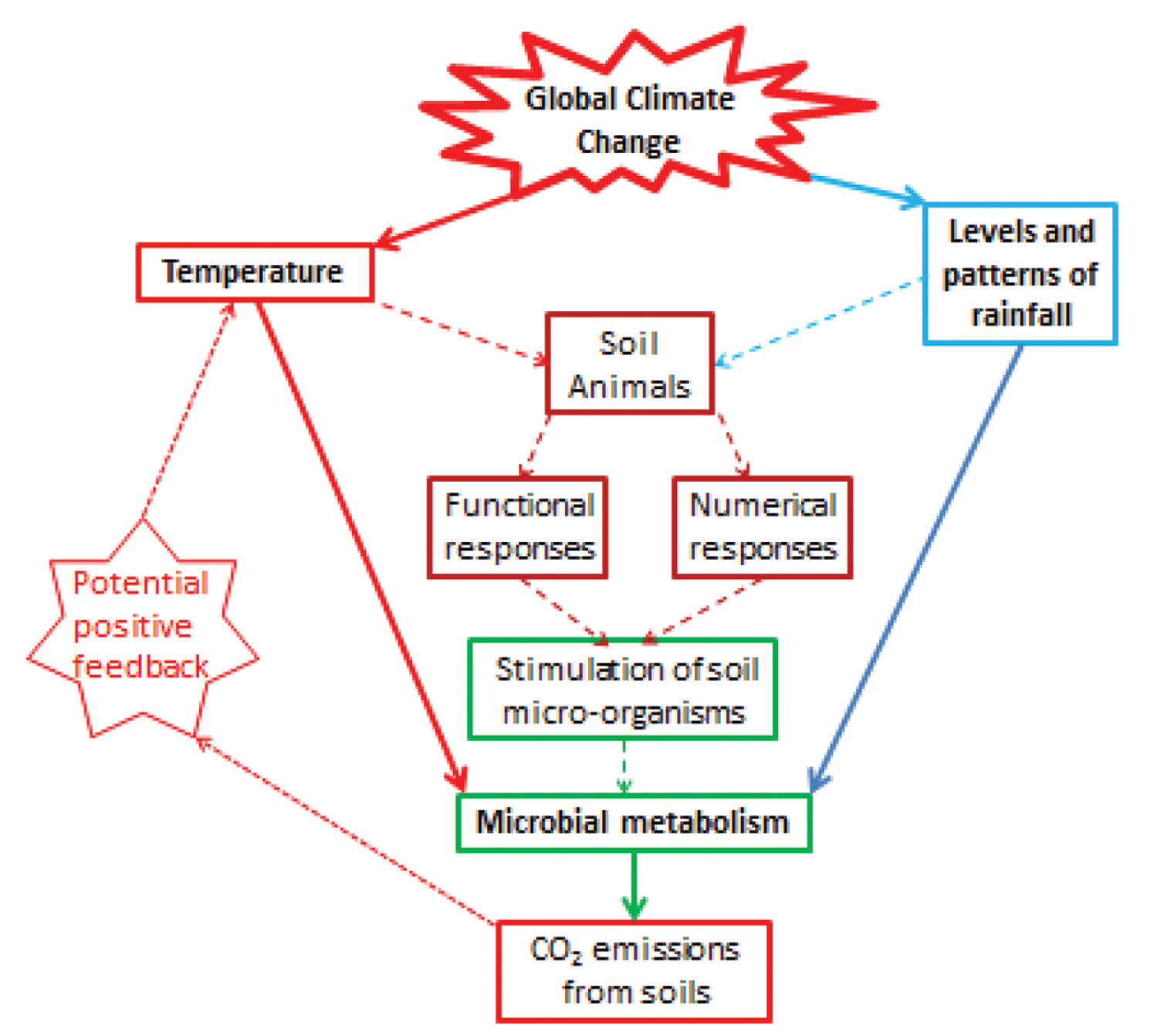
|
||
|
A conceptual diagram illustrating some of the pathways by which changes in global climate could potentially impact on rates of carbon dioxide emissions from soils. Both changes in temperature and in the levels and patterns of rainfall have strong direct effects on the metabolism of bacteria and fungi but their ecology and metabolism are also regulated by the extent to which they are stimulated by soil animals. Both functional (e.g., behavioural and physiological) responses and numerical (both life history and population) responses of soil animals are affected by their microclimate. This is in turn affected by larger scale changes in temperature and rainfall. Therefore, as well as their direct effect on microbial metabolism, these climatic variables have a strong indirect effect by influencing the behavioural, physiological, life history, and population processes of soil animals such as isopods. |